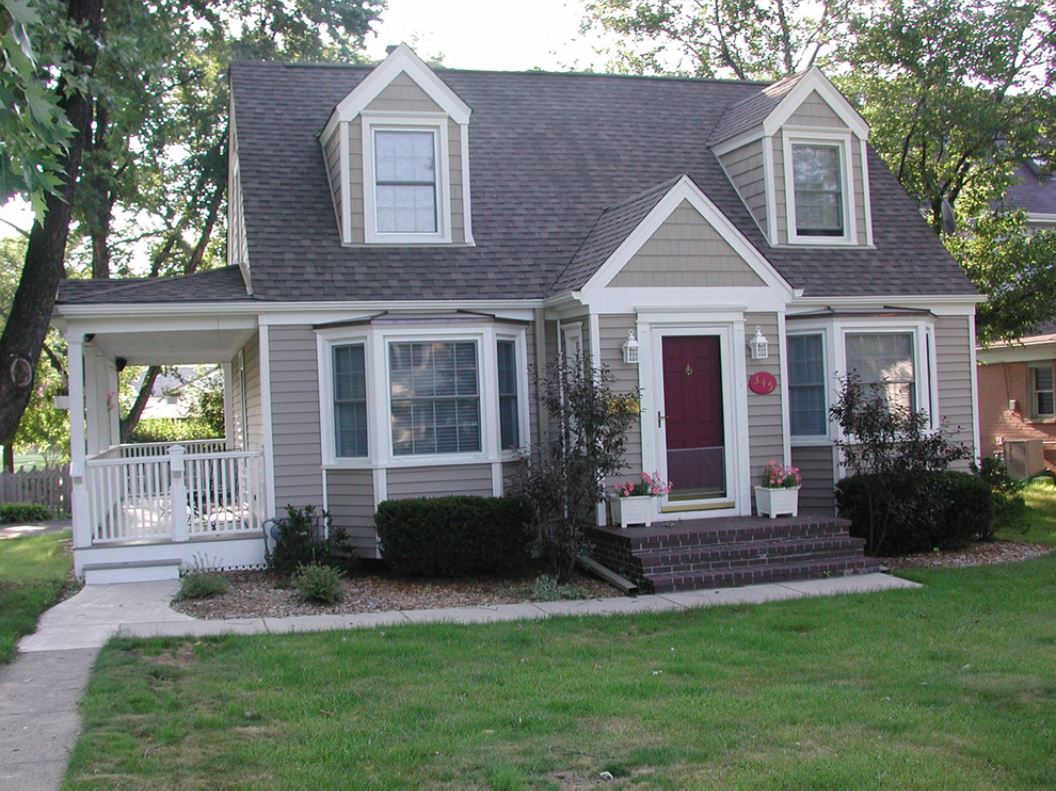The old adage really is true: you only get one chance to make a good first impression. And the same applies when it comes to your home, too. What your neighbors and potential homebuyers see. When they first gaze upon your home’s exterior really does help determine. That all-important first impression they have of your house. And no matter what kind of exterior features your home boasts, you’ll still need to consider adding or replacing your siding at some point.
The roof, siding, windows, doors, landscaping, and the yard itself all combine to play important roles. In this article, we’ll be taking a closer look at the siding. Most modern siding products are designed to last for many years. But the brutally hot summers and winters can still take their toll. Both in terms of product performance and appearance. Noticing any issues with warping, cracking, fading, or excessive mold growth? Then it may be time to upgrade your existing siding.
Wood siding is still popular in many parts of the United States, especially in the West – many homeowners there never even consider any other type of siding, in fact. Natural wood siding has been in use for centuries and is well-liked for its distinctive appearance and texture. As far as some homeowners are concern, wood is the real thing, and nothing less will do. But it’s also true that there are pros and cons to every siding solution; here are some things worth keeping in mind where wood siding is concerned.
Which Siding is Best for Your House?
It’s a good idea to take a drive around your area and see which types of homes you like – and which ones you don’t. Note the siding types, materials, design features, and color combinations. Also, make a note of your own home’s roof, shutters, and other exterior accents to get a better idea. That kind of siding look might best for your home’s features.
You probably want your home to fit into the surrounding landscape. Without necessarily duplicating the exact look of your neighbors’ selections.
It’s also a good idea to check whether your neighborhood has any restrictions regarding siding choices before making a decision. Some communities or HOAs have regulations in place about permissible building materials and siding colors. So you’ll definitely want to get familiar with any limits that may apply in your particular situation.
Also have a look at “A Beginner’s Guide: Energy Saving & Sound Comforts In Building“.
Pros of Wood Siding
1. Wood can be painted or stained in a variety of colors and finishes. The wood siding itself can be repaired or replaced as needed. Natural wood siding can be durable too, as long as it’s maintained properly.
2. Wood is an eco-friendly choice. It doesn’t emit an excessive amount of pollutants during manufacturing. It’s biodegradable, and it’s also considered a renewable resource. If going green is important to you, then wood siding can certainly be a logical choice.
3. Just like any other product made from wood, this type of siding delivers a natural look and feel that many homeowners find to be appealing. In addition, wood siding is more customizable than some other available siding materials.
4. If you’re preparing to sell and are looking for a way to increase your property’s resale value, then a wood siding replacement might make sense. Real estate investors have noted that wood-sided homes can fetch better prices simply due to the preferred aesthetic value of wood. While it’s true that wood can cost more than other comparable materials like aluminum or vinyl. Many home buyers are still willing to pay more for a home with wood siding.
5. Generally speaking, wood is still readily available, and wood siding isn’t necessarily hard to install – as long as you know what you’re doing. Those with carpentry skills may even be able to take on wood siding installation as a DIY project, thus saving some money on labor costs in the process.
6. Wood siding comes in a number of styles and designs, including lap, shingle, shake, tongue and groove, board and batten, and bevel. With all of these potential applications, wood siding can be suitable for practically any architectural style.
Cons of Wood Siding
1. Maintaining wooden siding can be both costly and time-consuming. Some wood siding styles require staining or repainting frequently in order to prevent threats from moisture or other environmental concerns. As you probably know, wood attracts a number of pests, including termites and woodpeckers. So if you decide to go with natural wood, just know that regular pest control inspections and treatments should be factored into your ongoing maintenance plans.
2. Another significant drawback to many types of wood siding is that it offers no additional insulation value beyond the wood itself. It’s also more prone to damage and weathering than other siding options.
3. If the wood becomes rotted or cracked, it really need replacement immediately. A single damaged strip of wood siding can be the only access point that moisture needs to seep into your home and cause additional problems. This explains why you’ll need to apply a proper amount of water sealant in order to help prevent damage from rain, humidity, or wind-driven precipitation.
4. Many wood shakes and shingles have poor flame spread fire ratings. This fact alone can lead to an increase in your home insurance premiums. Worse still, wood siding can make your home more vulnerable to fire threats.
5. Most wood sidings have to be clean at least annually in order to remove any buildup of dirt and/or mildew. And because the preferred cleaning approach for wood involves a soft-bristled brush rather than a power washer (a high-pressure washer can cause damage), the process can be long and labor-intensive.
6. Some types of wood siding are less expensive than others, but the best grades of wood can be very costly indeed. Wood siding often tends to carry a higher installation cost than some other available siding materials.
Next Steps With proper care and maintenance, your new siding should be able to provide many years of reliable service. But in many cases, even having the right maintenance plan isn’t enough to overcome a siding installation that was done incorrectly in the first place! No matter what siding materials you end up choosing, it’s also incredibly important to choose the right Siding Contractors to ensure that the job is right the first time. Ask around, and do your homework. Check with local friends and family to see who they trust, and take some time to check reviews online as well.




